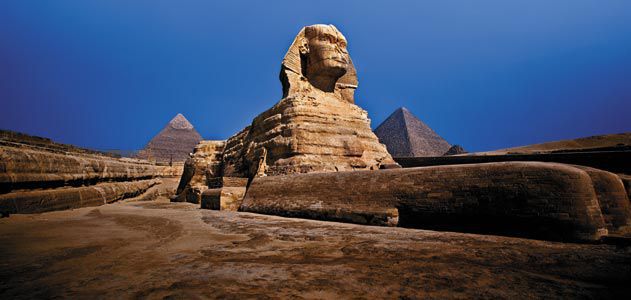The second sphinx buried in sand in Egypt Giza plateau, pyramid much older than believed, researchers
It is one of the most prominent structures in the world and for decades has been the Sphinx – the legendary and giant statue of what seems to be a lion with a human face. It has captured the imaginations of archaeologists, photographers, and visitors on the Giza plateau of Egypt.
But there could be a second Sphinx built around the same time as the one known to the world — but this Sphinx has been hidden for thousands of years in the sands of Giza.
Two British historians, Gerry Cannon and Malcolm Hutton are now suggesting this theory: Who says that unlike numerous examples of smaller Sphinx structures and illustrated depictions of Sphinxes found in Egypt, the Sphinx of Giza is a rarity in that it stands alone, according to a report by the Egypt Today online site.
Every other Sphinx dating from ancient Egypt has been part of a pair, believed to represent the “duality” of male and female, the report says — also representing the duality of the sun and moon.
Ancient Egyptians believed that at the end of every day the sun traveled underground and reemerged as the moon, with a Sphinx protecting each end of the journey.
“Every time we have to deal with the solar cult, we should discuss of one lion and one lioness facing each other, posing parallel to each other or sitting in a back-to-back position,” said Egyptologist Bassam el-Shammaa, whose 2011 ebook, Quest for the Truth: Discovering The Second Sphinx forms the basis for the current Cannon and Hutton theory.
Cannon and Hutton also say that the Sphinx is much older than the current estimated age of approximately 4,600 years.
In fact, rather than the generally accepted belief that the Sphinx was constructed sometime between 2,700 B.C. and 2,500 B.C., though the exact date has not been pinpointed, Cannon and Hutton say that the structure could not have been built at that time.
In fact, they place the construction of the Sphinx prior to Earth’s most recent Ice Age — sometime earlier than 10,000 B.C. If their theory is correct, the Sphinx would be about eight millennia older than experts currently believe.
“The Sphinx had to have been carved when there was no sand there. You can’t carve a rock when it’s under the sand,” Cannon told the British Express newspaper. “When it was not under the sand was about 12,000 years ago and the Egyptians weren’t there.”
The researchers also say that the pyramids of Giza, which the Sphinx is apparently positioned to guard, would have been built at approximately the same time as the Sphinx — meaning that the ancient Egyptian civilization recorded by history was not the origin of the remarkable structures.
An earlier, prehistoric civilization that was perhaps wiped out by the ice age, must have built the Sphinx and pyramids, the pair of authors say.
